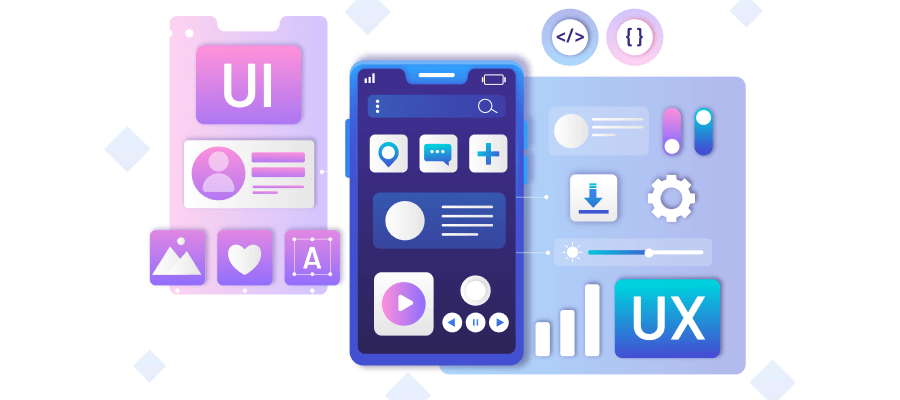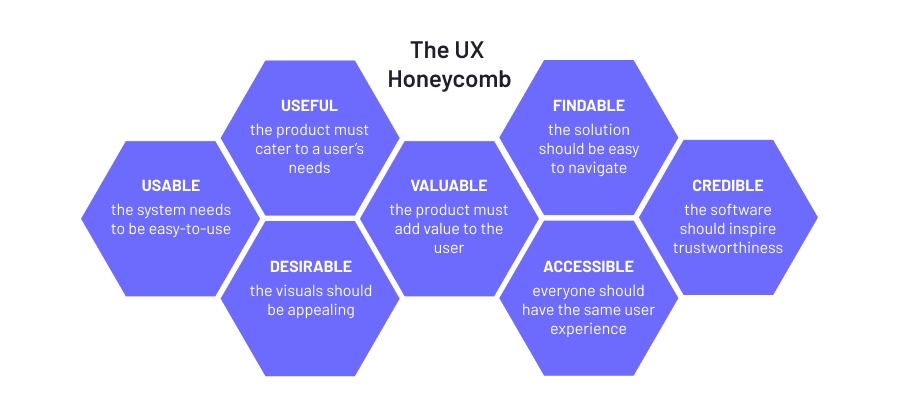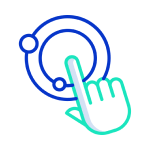No matter the type of software you want to develop, its UI/UX design is of utmost importance. After all, nobody is going to stay loyal to your solution if the usability is subpar and it wasn’t developed with the end user in mind.
Hence, UI and UX design has been an integral part of software development. However, these concepts aren’t always easy to decipher. Some people use the terms interchangeably while others merge the two together. Naturally, this leads to confusion during project meetings and may cause business leaders to keep asking themselves, what is the difference between UX and UI?
Well, that’s precisely what we’ve decided to answer in today’s post. So, keep reading to find out how UI and UX design differ from each other and whether or not you actually need both for the success of your software.
User-Driven Approach
Watch our webinar and learn the top ways of reducing poor user satisfaction, low adoption rates, and decreased loyalty.
Defining UI/UX

First, prior to comparing UI vs UX, let’s start by unpacking the terminology and understanding what UI and UX design actually are. At the most basic level, both of these are types of design that tend to be leveraged during the development of web solutions, mobile apps, or pretty much any other software.
Find out how we Redesigned a Web App for a Membership Organization
UI and UX often go hand in hand, but that doesn’t mean that they are interchangeable. UI stands for “user interface” while UX refers to the “user experience” and both are imperative for the well-functioning of an application. However, before we narrow down the differences between the two, let’s take a look at the definitions of UI and UX design individually.
What is UI Design?
UI design is the process of developing aesthetically pleasing interfaces by focusing on the look and style of software. This type of design is all about selecting optimal color schemes, suitable buttons, and other visual elements for an application.
A user interface is immensely important because it’s the first thing that a person notices — albeit at times unconsciously when visiting a website or interacting with a new digital tool. Within seconds users decide whether or not they’ll stay engaged, and it’s up to the UI to retain them initially.
Discover our Step by Step Guide to Creating a Website
What is UX Design?
UX design, on the other hand, is more focused on the functionality of your product and the ways in which users interact with it. More specifically, UX designers think about the emotions people might feel while using your software.
Hence, it is a process of building products that deliver seamless and meaningful experiences that leave users with lasting positive emotions. As such, UX design can apply to any type of experience, it doesn’t necessarily have to be within the digital world.
Given UX’s wider scope of influence, Peter Morville, a pioneer in the fields of information architecture and user experience, came up with a “UX honeycomb” to represent seven crucial facets of UX design.

So, when developing any kind of application, it’s important to keep these seven aspects in mind as they can help you prioritize tasks and make sure you aren’t overlooking any part of the user experience.
What is the Difference Between UI and UX?
Now that we’ve got the definitions out of the way, it’s time to answer the question you came here with, what’s the difference between UI and UX? To make it easier, we’ve outlined the four main areas of distinction below.
1. Focus

One of the first contrasts we’ve got to mention when discussing the user experience vs user interface is the focus of each one. You see, the UX is focused on a user’s entire journey and solving a problem with the help of your product.
Hence, UX designers try to figure out the pain-points people might have and ensure that a certain product caters to them smoothly. To do so, they conduct user research and map out the entire journey one might go through when dealing with an application.
Then, they make sure to optimize every step and include all the needed features so that the end user leaves with a positive impression and keeps coming back for the top-notch experience.
Conversely, the UI is all about the look of the product’s interface and its aesthetics. Its focus is to create an intuitive and attractive interface that pleases the user’s eye and doesn’t overwhelm them.
UI designers are less concerned with the entire experience a user might go through. Instead, they prioritize creating digital visuals that appeal to customers and entice them to stay on the app.
Find out what a UI/UX Focus in Healthcare Software Looks Like
2. Elements

Another major distinction between UI and UX lies within the elements that each one works with. UI, as we’ve briefly mentioned, includes all the icons, buttons, typography, colors, and other design components that go into creating a beautiful interface.
The UX, on the other hand, is about the way in which a person interacts with all the above-mentioned design elements, the user flow, and the overall functionality of the product. As such, what constitutes a good UX is a well organized information architecture, interaction-oriented design, usability, visual appeal, and thorough user research.
3. Range of Interactions

The third difference between UI and UX we’d like to mention is the fact that a UX encompasses all types of interactions between users and your company’s product or service. It might involve in-person discussions with your sales team, calls with representatives at your contact center, or even the physical experience of getting a product delivered. A UX is about any potential touch point.
A UI, however, is specific to digital products and software. It’s focused on virtual interactions and making them the most pleasing they can be.
4. Work Output

Lastly, the fruits of labor differ for UX and UI designers. While the former is focused on the user journey and how the product facilitates it, the latter is responsible for the consistency of design and all visual elements.
So, UX designers perform the following tasks:
- Conduct user research
- Develop user personas
- Identify the information architecture of a solution
- Design wireframes
- Create testable prototypes
UI designers, on the other hand, work on:
- Creating style guides
- Developing buttons, icons, scrollbars, animations
- Designing screens that users might interact with
- Ensuring the solution has a responsive design
As you can see, the work output of each specialist is different and speaks to the contrast between the two design areas.
However, it’s important to note that in some projects, there’s one person working on the UI/UX of a solution. This is because, in the modern world, more and more professionals choose to master both skills.
Another scenario you might encounter is having a single specialist work on your software UI/UX design and then collaborating with a business analyst for prototype development. In short, there are multiple options of how a team may be structured. Yet, what remains certain is the importance of delivering a well-thought out user experience.
Learn more about the Role of Business Analysis in App Development
Develop Software with Impeccable UI/UX Design
Now that we’ve uncovered the meaning of UI/UX design and discussed the user interface vs. user experience differences, it’s important to note that at the end of the day, the two have to work in tandem.
Neither is necessarily more important than the other. Rather, UI and UX go hand in hand so that great software can be developed and be successful. After all, a beautiful design that doesn’t perform well will irritate users, and a well-functioning solution that is unappealing might make people question its reliability.
So, if you’re looking to develop software that leaves a lasting positive impression on your users — don’t hesitate to reach out to Velvetech. Our team has spent years building solutions for clients across all kinds of industries and delivering state-of-the-art UI/UX design services every time. We always look forward to discussing a potential collaboration.































